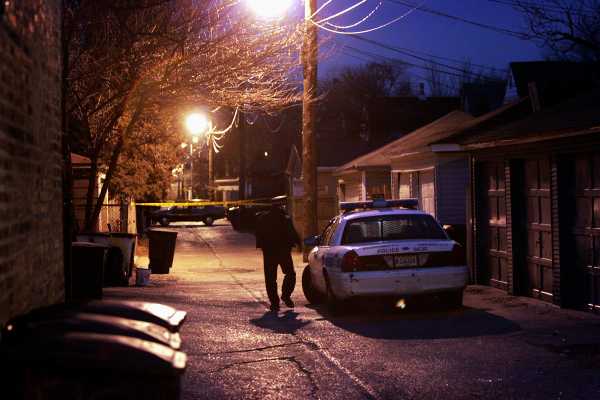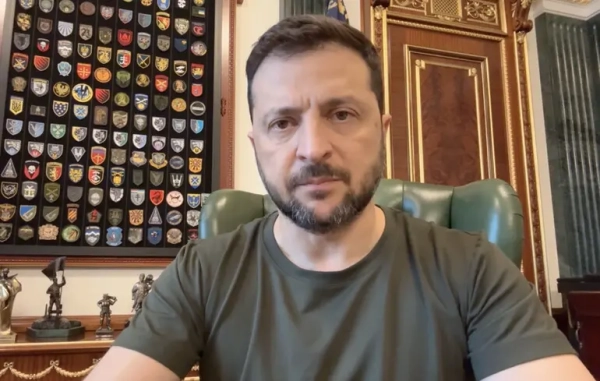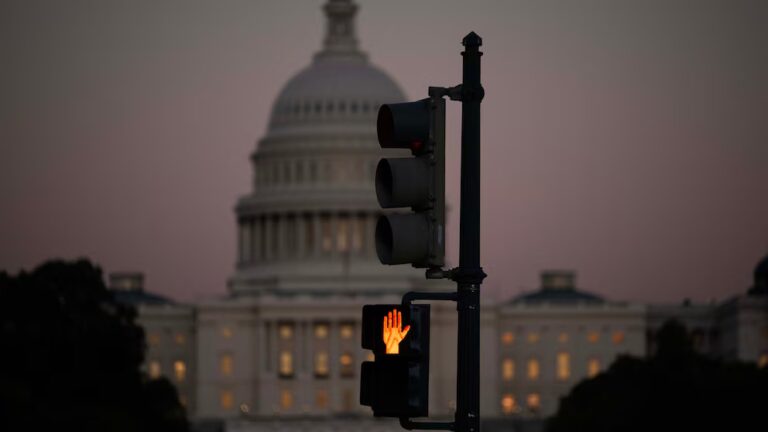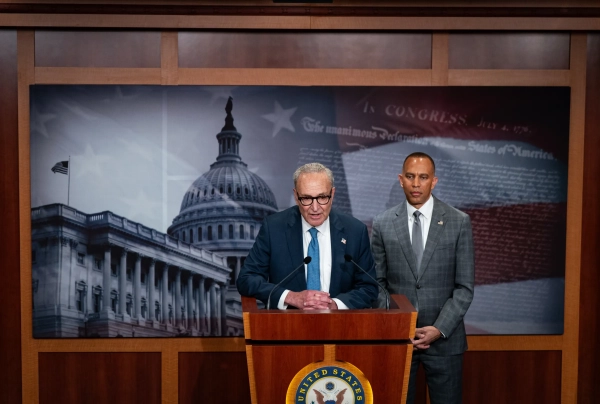
This week, Americans woke up to familiar headlines: Over the July 4 holiday weekend, six people were killed and 66 were hurt in shootings in Chicago. Eighteen people were shot in St. Louis. Seventeen in Boston. It was another marker of what often feels like an intractable urban gun violence problem in America.
But in his new book Bleeding Out, criminal justice scholar Thomas Abt argues that it does not have to be this way. He presents a vision for dealing with urban violence by fundamentally rethinking how law enforcement and other government resources are used — a cost-effective solution that could save lives, while being more palatable to both political parties than sweeping gun control.
Gun violence in the US is often talked about as if it’s a single problem. But it’s really at least four different ones: suicides, urban gun violence, domestic violence, and mass shootings. Suicides are the majority of the nearly 40,000 gun deaths in the US in 2017. But urban violence is the second biggest category, making up a majority of the 14,000 gun homicides that same year.
“Since October 2001, 410 people have died in domestic terrorist attacks and 520 have died in mass shootings,” Abt writes. “During that same period, at least one hundred thousand lost their lives to urban violence.”
While rates of crime and violence have declined since the 1990s, the decline has been uneven. Since 1991, homicide rates have fallen by 86 percent in New York City and 73 percent in Los Angeles. But they have increased in Indianapolis (up 64 percent), Pittsburgh (53 percent), Phoenix (23 percent), and Baltimore (13 percent). And America still leads the developed world in gun violence.
Bleeding Out makes a compelling case that there is a path forward, calling for a more focused, balanced, and fair strategy that leverages not just the police but also social service and public health agencies, as well as activists and community leaders, to directly confront the few people in communities culpable for the majority of urban violence. It’s an attempt at making policing more effective, while addressing the justifiable skepticism, particularly on the left and in the Black Lives Matter movement, about whether a criminal justice system riddled with racial disparities and mired by high-profile killings by police officers can handle the task.
Drawing on much of the research first popularized by star criminologist David Kennedy, Abt points out that violence is incredibly concentrated in the US. In 2015, more than a quarter of gun homicides happened in about 1,200 neighborhoods that house just 1.5 percent of the US population. “Taken together, these communities would fit into an area measuring just forty-two miles wide and long,” Abt writes.
But rather than address this concentration of violence, police have by and large used sweeping dragnet policies — like New York City’s stop-and-frisk strategy, which targeted entire communities, particularly black and brown ones, for more aggressive law enforcement. Federal funding incentives encouraged police to arrest as many people as possible, and local and state governments played along — in some cases taking it further, as was true in Ferguson, Missouri, by treating police departments as revenue-generating machines that were charged with ticketing and fining as many people as possible.
Abt uses the latest research to argue that these kinds of approaches haven’t just fostered community resentment, but that they are ineffective ways of combating crime and violence.
As someone who’s written about gun violence for years at Vox, I’ve typically focused on gun control — and I’ve made it no secret that I think the US will have to heavily restrict access to guns and reduce the number of firearms within our borders if we ever hope to get to the much lower levels of gun violence that all other developed countries experience.
But given that sweeping gun control is admittedly unlikely to happen anytime soon, Abt offers an alternative that could break through the partisan gridlock we face on gun violence. It’s an approach that can’t and doesn’t completely address America’s overall gun problem — it’s focused solely on urban violence, for one — but the research Abt presents, including from American cities that have used a version of this approach, suggest it would save lives.
It won’t be easy. That’s not because it’s expensive; Abt estimates his proposal would save thousands of lives over the next decade and add up to less than 0.5 percent of Chicago’s or Baltimore’s annual budgets. But it would involve a reorientation in how America approaches urban violence — requiring police, public health agencies, and activists to come together and stick to an approach that may contradict what they’ve been told or believed before.
But the book persuaded me, at least, that it’s worth trying.
The problems with modern policing
The failure of modern American policing is crystallized in stop-and-frisk. The strategy, used in cities ranging from New York City to Chicago to Los Angeles, puts cops in neighborhoods to, well, stop and frisk as many people as possible, hoping to find contraband, like guns and drugs, that could contribute to crime or violence.
In practice, stop-and-frisk captures a lot of innocent people, especially those of color. In New York City, 80 or 90 percent of people stopped, depending on the year, were found to have done nothing wrong, and black and brown people were disproportionately stopped. Meanwhile, it didn’t appear to reduce crime much, if at all; studies found stop-and-frisk had weak to no effects, and crime in New York City continued to drop after the policy’s demise.
In fact, police often do a bad job of actually addressing urban violence. One example of this failure: In 2017, nearly 62 percent of murder cases nationwide were resolved through an arrest or other means, meaning that if you killed someone, there was a nearly two-in-five chance you could get away with it.
Zoom in on minority communities and it’s even worse. As Abt writes, “Over the past decade in Boston, police have made arrests in 90 percent of the homicides with white victims but in just 42 percent of those with black victims.” In some communities of color, the homicide solve rate can fall to the single digits.
So on one hand, many black and Latino Americans feel harassed for petty crimes, from loitering to traffic violations to drugs, or for no reason at all. On the other hand, police aren’t actually solving major crimes in their communities to keep them safe.
The resulting distrust likely leads to more violence: When people don’t trust the police or the criminal justice system, they’re less likely to work with either. This not only makes it harder for detectives to catch people who may go on to commit more crimes or murders, but if someone gets into a dangerous or heated situation, his distrust in the police may lead him to take matters into his own hands — potentially resorting to violence — instead of calling 911.
A 2016 study spoke to this dynamic. In 2004, Milwaukee police officers brutally beat Frank Jude, a biracial man they believed stole a police badge. Researchers Matthew Desmond of Harvard, Andrew Papachristos of Yale, and David Kirk of Oxford found that after news of the beating broke in 2005, 17 percent (22,200) fewer 911 calls were made in the following year than would have otherwise been expected, particularly in black neighborhoods. The effect persisted even after the officers involved in the beating were charged and fired.
But crime was still happening in these neighborhoods. Indeed, as 911 calls dropped, homicides rose to the deadliest level in seven years. That suggests people were simply choosing not to involve the police. It might even mean that civilians took matters into their own hands to protect themselves, leading to a cycle of violence.
This is an especially acute problem in low-income, minority neighborhoods, because they’ve disproportionately felt the abuse and failures of the justice system — explaining why such communities generally report higher violent and lethal crime rates. But this would be a problem in any neighborhood, no matter the racial or socioeconomic makeup, that went through the same kinds of problems with policing.
As journalist Jill Leovy wrote in her 2015 book on crime in Los Angeles, Ghettoside, “Take a bunch of teenage boys from the whitest, safest suburb in America and plunk them down in a place where their friends are murdered and they are constantly attacked and threatened. Signal that no one cares, and fail to solve murders. Limit their options for escape. Then see what happens.”
In Bleeding Out, Abt argues that law enforcement and other government agencies can address these problems by focusing on three elements: focus, balance, and fairness. Police, other officials, and community leaders should focus on the few individuals who commit and are victim to the great majority of local violence, balancing the threat of punishment with offers of help. To give the process a sense of fairness, officials should communicate clearly and transparently, bringing in the community to provide feedback and accountability.
There’s real-world evidence that this could work.
There are evidence-based strategies for urban violence
In 2012, after years of struggling with gun violence, Oakland, California, adopted what is now known as the Oakland Ceasefire — detailed in a recent rigorous analysis published by the Giffords Law Center, an advocacy group that aims to reduce gun violence.
First, officials analyzed crime trends to see who was most at risk to commit gun violence. They found just 400 people — 0.1 percent of the city’s population — were at the highest risk at any given time, and responsible for the majority of the city’s homicides.
Officials and community leaders then coordinated interventions for these people, hosting call-ins in which they brought in the people at highest risk for gun violence for a meeting with police, social services, faith leaders, and other community activists. After the call-in, local officials followed up with individual interventions as needed.
The idea was to convey a clear, direct message, something like: “We know who you are. We want the best for you, but we can’t and don’t approve of what you’re doing. We will crack down quickly and harshly if you continue down a path of violence. But if you agree to stop, we’ll give you an array of services — jobs, education, health care, and so on — to help you build a better, violence-free life.”
The approach had focus, balance, and fairness. It focused on the 400 individuals at the greatest risk of violence. It made the threat of law enforcement clear but balanced it with community help. The entire process was made as transparent and clear as possible, with leaders throughout the community involved.
The result: While homicides increased overall in Baltimore, Chicago, St. Louis, and other major cities, Oakland’s homicide rate plummeted by almost 50 percent from 2012 to 2017. The homicide solve rate went from 29 percent in 2011, the year before Oakland Ceasefire began, to more than 70 percent in 2017 — perhaps a sign of increased community trust in the police, according to Giffords.
This strategy, called “focused deterrence,” has also been credited with the “Boston miracle,” a 79 percent drop in violent crime in the city in the 1990s. It’s at the center of Abt’s book.
A large body of research supports the approach: In 2016, Abt and sociologist Christopher Winship reviewed the evidence for strategies to combat community violence, including more than 1,400 individual studies in all. Of the 30 strategies he studied, “focused deterrence had the strongest and most consistent anti-violence effects,” Abt writes.
Another review of the research, from the National Academies of Sciences, Engineering, and Medicine, supported the approach as well, finding it reduced “gang violence, street crime driven by drug markets, and repeat individual offending” in both the short and long term.
But balance is key. Local governments and police have tried in the past to use only the law enforcement side of the strategy. That doesn’t work; offering social services — which sometimes requires more resources — is crucial to the strategy’s success, Abt emphasizes.
As Richard Rosenfeld, a criminologist at the University of Missouri in St. Louis, previously told me, offering social services “lends a certain legitimacy to the police. They’re not there to just serve warrants or warn people about what’s going to happen to them if they commit another crime, but also conveys a certain degree of concern for those individuals and their lives.”
Beyond focused deterrence, Abt also argues that other, complementary approaches could help curtail urban violence, including Chicago’s Becoming a Man, a program for teens that uses cognitive behavioral therapy along with sports and other activities; and Cure Violence, an approach that uses “interrupters,” typically with backgrounds in gangs or gun violence, to personally intervene in cases where violence seems likely to break out. These programs have less evidence behind them than focused deterrence, but there’s promising proof they could work if properly implemented.
Just like focused deterrence, what makes these programs work, Abt argues, is focus, balance, and fairness. Both Becoming a Man and Cure Violence target those at risk of gun violence. They acknowledge the dangerous situation but also offer a way out. And they focus on making sure the subjects of the interventions are heard and taken seriously.
Abt estimates that the right approach wouldn’t even cost much: A program that tackles urban violence in the 20 cities with the most homicides overall and in the 20 cities with the highest homicide rates could cost $158 million in the first year and less with each ensuing year — a tiny fraction of a federal budget that totals around $4 trillion — and would save more than 12,000 people over eight years.
That amounts to a little more than 10 percent of gun homicides nationwide each year. So it wouldn’t take care of America’s whole gun violence problem, but it would achieve a sizable dent.
Abt’s policies could also work alongside stricter gun laws, which could help address the remaining gun deaths. But unlike gun control, Abt’s approach isn’t tied up in all the debates about the Second Amendment and gun rights, making it perhaps more politically feasible and something the country’s leaders could do right now. That’s the promise of what Abt is proposing.
The big question: how to implement and sustain anti-violence strategies
Oakland’s experience, however, also shows the potential pitfalls of focused deterrence: It requires a high level of coordination, and there’s a risk that city officials might lose interest. Before the current, successful version that began in 2012, the city tried the strategy before, then abandoned it, in what the Giffords report labeled “false starts.”
One consistent problem with focused deterrence is poor implementation. In Oakland, for example, Giffords found that previous attempts failed to bring in community members and deployed new social services broadly rather than targeting those most at risk. Police, meanwhile, continued to focus on sweeping actions; as one police captain put it, cops were trained to “lock up as many bad guys as we could — put as much dope, as many guns on the table as we possibly could.”
Another problem is how many people have to be on board for focused deterrence to work. In the last chapter of his book, Abt details the cast of characters and agencies: the mayor or city manager, head of police, heads of various social services agencies, community leaders, the community itself, and activists. Everyone must be committed to a single strategy focused on a specific message and goal, and they have to stick with it.
Consider what total deployment of focused deterrence would look like in Chicago. At the top, the mayor and perhaps the governor and federal officials would have to lead the charge. These leaders would then have to get the police department and government agencies, from health to support services, to sign on. Faith leaders and other community members, many of whom distrust the police, would have to agree to work with them. And everyone would have to keep targeting specific individuals with a message that balances punishment and support.
Focused deterrence can also be a victim of its own success. As crime drops, officials with limited budgets may begin to question why they need to keep the policy — and its costs to law enforcement and social services — on the books rather than moving on to other issues. Even Boston, after its self-described “miracle” in the 1990s, over time ditched the approach.
But, Abt argues, abandoning the approach simply leads to crime and violence creeping back up — what he calls “more often than not a failure of governance, not of the strategy itself.”
The solution, he says, is public pressure — from advocates, politicians, journalists, and communities. But that will require that the public pay sustained and focused attention to everyday urban gun violence rather than just major mass shootings.
“It must be remembered that violence does not concentrate in poor communities of color by accident,” he writes. “Disparities in crime and violence that were created by white racism are now perpetuated by white indifference. Today, racial apathy, not racial hatred, is a major obstacle to progress. Hatred may be the greater sin, but it is less pervasive. White people’s collective unconcern for their fellow black and brown citizens is more prevalent and more damaging.”
I can vouch for this dynamic: When we write about mass shootings at Vox, they tend to get a lot of attention. When we write about more typical everyday shootings, those articles get fewer readers and overall interest. I can’t prove with 100 percent certainty why this is, but it seems likely that the fact victims of widely covered mass shootings are often white — while everyday shooting victims often aren’t — plays a role.
Advocating for and adopting strategies like focused deterrence, Becoming a Man, and Cure Violence could change the dynamic. These approaches wouldn’t solve the US’s entire gun problem on their own. But they would be a significant start — letting thousands of people live and grow up with less fear of the kind of gun violence that is currently routine in much of America.
Sourse: vox.com






